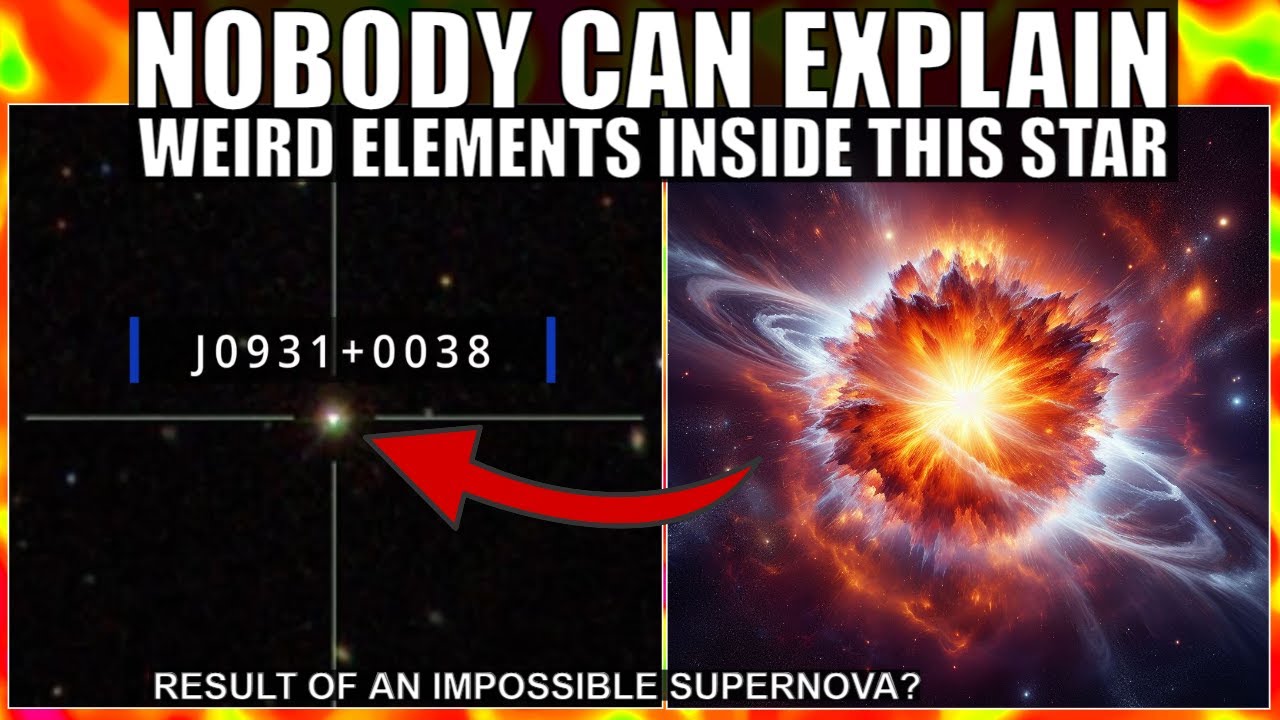You don’t often encounter the word “spectacular” in a scientific publication in staid astrophysics journals. But here we have “Spectacular nucleosynthesis from early massive stars” (full text at link). Here is the abstract.
Stars formed with initial mass over 50 Msun are very rare today, but they are thought to be more common in the early universe. The fates of those early, metal-poor, massive stars are highly uncertain. Most are expected to directly collapse to black holes, while some may explode as a result of rotationally powered engines or the pair-creation instability. We present the chemical abundances of J0931+0038, a nearby low-mass star identified in early followup of SDSS-V Milky Way Mapper, which preserves the signature of unusual nucleosynthesis from a massive star in the early universe. J0931+0038 has relatively high metallicity ([Fe/H] = -1.76\pm 0.13) but an extreme odd-even abundance pattern, with some of the lowest known abundance ratios of [N/Fe], [Na/Fe], [K/Fe], [Sc/Fe], and [Ba/Fe]. The implication is that a majority of its metals originated in a single extremely metal-poor nucleosynthetic source. An extensive search through nucleosynthesis predictions finds a clear preference for progenitors with initial mass > 50 Msun, making J0931+0038 one of the first observational constraints on nucleosynthesis in this mass range. However the full abundance pattern is not matched by any models in the literature. J0931+0038 thus presents a challenge for the next generation of nucleosynthesis models and motivates study of high-mass progenitor stars impacted by convection, rotation, jets, and/or binary companions. Though rare, more examples of unusual early nucleosynthesis in metal-poor stars should be found in upcoming large spectroscopic surveys.
The paper concludes that the nebula from which the star formed must have been produced from the supernova of a single primordial star because otherwise the extreme pattern of heavy element abundances would have been flattened out in a mixture of gases processed through multiple supernovæ.
2 Likes
OK. Being an idiot in respect to nuclear astrophysics, ?how do we actually know these things. Some of this seems simply conjecture - guessing from pictures.
2 Likes
The elemental makeup of stars is determined from their spectra. Each element (or compound, but you don’t find compounds in any but the coolest stars) has a unique pattern of spectral lines which identifies it. These were mostly identified in the 19th century, but more recently we’ve been able to calculate the spectra of elements from first principles using quantum mechanics and this agrees with experiment.
If you take the light from a star and run it through a spectrograph (think prism, but these days they use diffraction gratings which are more precise and lose less of the light), it makes a pattern where the lines indicate the elements present in the star. (Some lines overlap, but there are almost always unique lines that distinguish one element from another.) Stars can generally be put into classes by the elements they contain. In this paper, a star is described whose elemental composition is like nothing else we’ve ever seen, which suggests its origin is unusual.
There’s nothing new about spectroscopy, and bench chemists do it every day. What’s new is the ability to collect and classify the spectra of millions of stars automatically by computerised observatories (in space and on the Earth), which allows finding the things that make you say “that’s odd”.
3 Likes
Well, OK. Butt in every day spectroscopy you control the substance you are investigating. ?How do you know the “light” you are analysing is from a single source and not some composite made over the years (think chest x-ray).
1 Like
When you make a spectrogram, the light comes from the single star at which the telescope is aimed. Background light is negligible in almost all cases. The light passes through the interstellar medium between the star and Earth, but that usually makes a minor contribution to the strength of lines in the spectrum from the star and can be subtracted out by comparing spectra of other stars along nearby lines of sight. Stars are convective in their outer (visible) zones (and for small stars, all the way to the core), so the elemental composition of the star is essentially the same over its entire visible surface. Consequently, summing over the whole star is representative of its composition.
2 Likes
